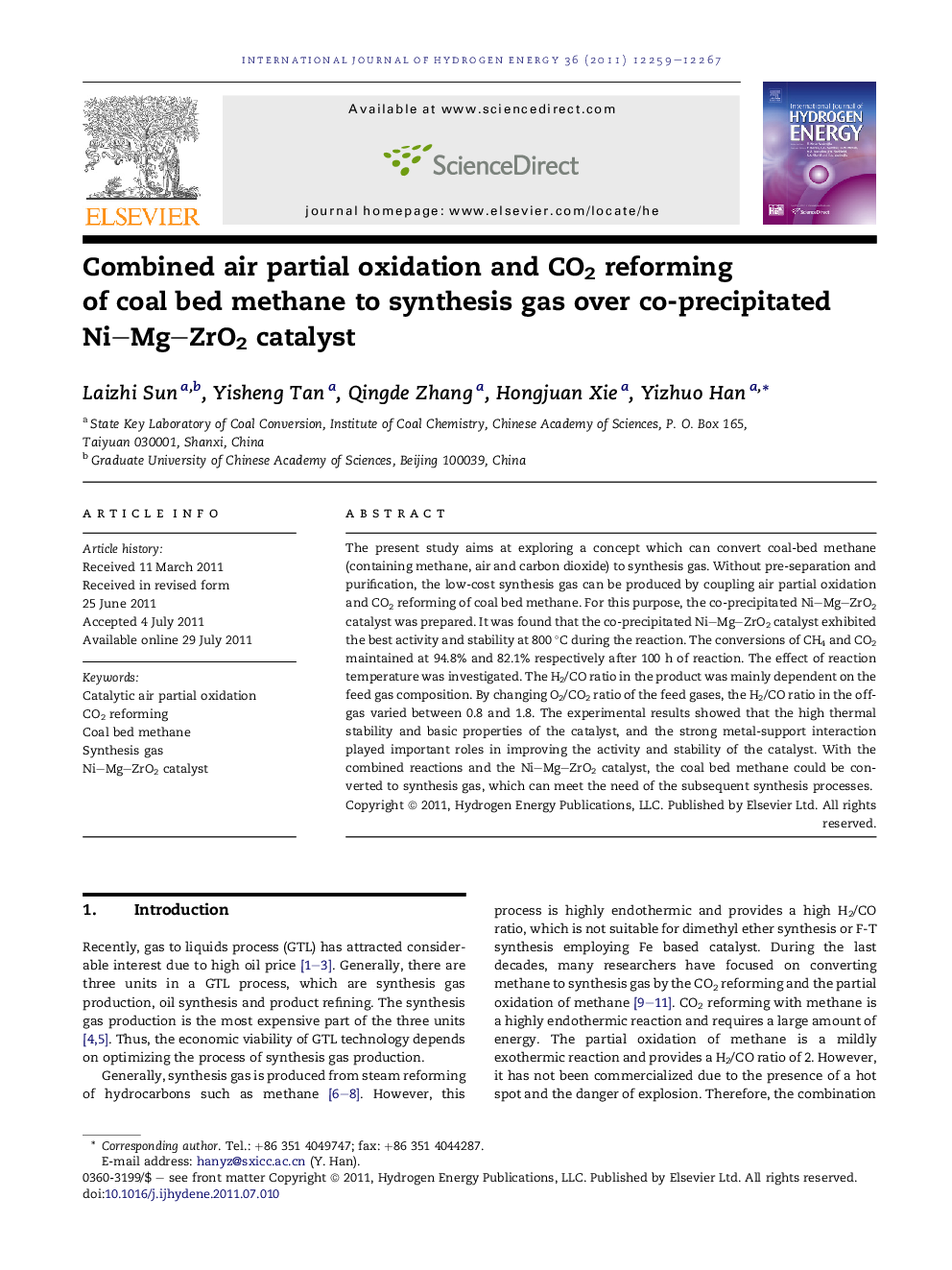| Article ID | Journal | Published Year | Pages | File Type |
|---|---|---|---|---|
| 1282426 | International Journal of Hydrogen Energy | 2011 | 9 Pages |
The present study aims at exploring a concept which can convert coal-bed methane (containing methane, air and carbon dioxide) to synthesis gas. Without pre-separation and purification, the low-cost synthesis gas can be produced by coupling air partial oxidation and CO2 reforming of coal bed methane. For this purpose, the co-precipitated Ni–Mg–ZrO2 catalyst was prepared. It was found that the co-precipitated Ni–Mg–ZrO2 catalyst exhibited the best activity and stability at 800 °C during the reaction. The conversions of CH4 and CO2 maintained at 94.8% and 82.1% respectively after 100 h of reaction. The effect of reaction temperature was investigated. The H2/CO ratio in the product was mainly dependent on the feed gas composition. By changing O2/CO2 ratio of the feed gases, the H2/CO ratio in the off-gas varied between 0.8 and 1.8. The experimental results showed that the high thermal stability and basic properties of the catalyst, and the strong metal-support interaction played important roles in improving the activity and stability of the catalyst. With the combined reactions and the Ni–Mg–ZrO2 catalyst, the coal bed methane could be converted to synthesis gas, which can meet the need of the subsequent synthesis processes.
► The co-precipitated Ni–MgO, Ni–ZrO2 and Ni–Mg–ZrO2 as catalysts. ► Catalysts for combined air partial oxidation and CO2 reforming of coal bed methane. ► The introduction of Mg improves the activity and stability of the catalyst. ► Ni–Mg–ZrO2 catalyst exhibits the best activity and stability during the reaction.
